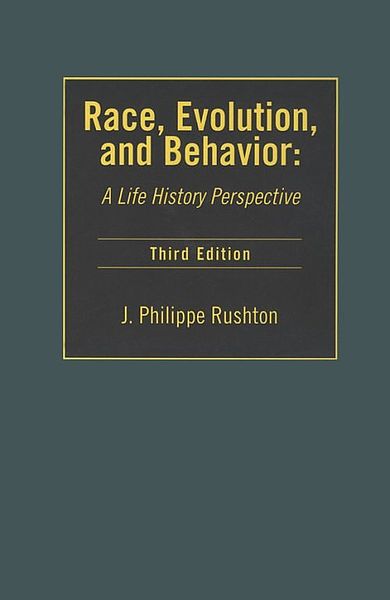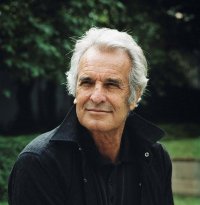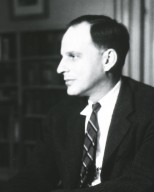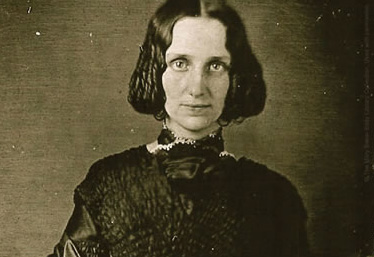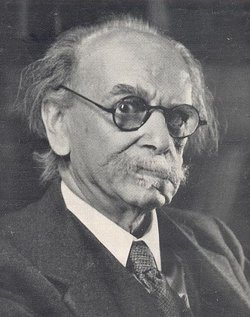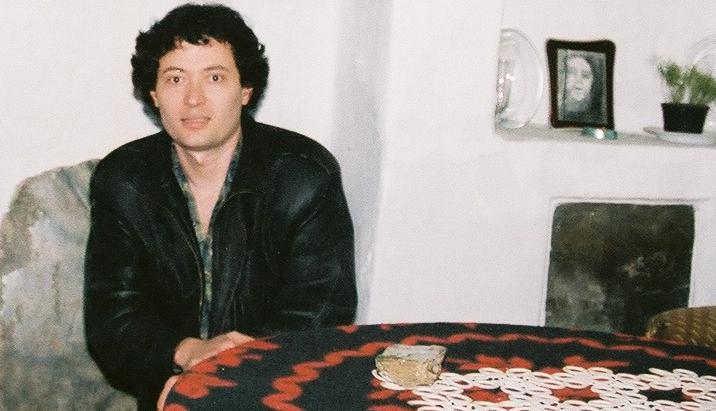Today I read a wonderful article by Andrew Hamilton at Counter-Currents about Norwegian revolutionary nationalist Anders Behring Breivik, 33. Hamilton let us know that among Norwegians the date July 22 is like September 11 in the US, that “literally everyone knows what it means.”
Recording and broadcasting of both, opening and closing statements by Breivik (April 16, 2012 & June 22, 2012) in Oslo District Court in Norway was prohibited. Reporters had to take manual notes.
It seems that Breivik’s courtroom statements have not been published by any major media outlet in any European language outside Norway. I would recommend future revolutionaries to study closely both statements and think seriously of what a trouble trio can do once it hits the fan.
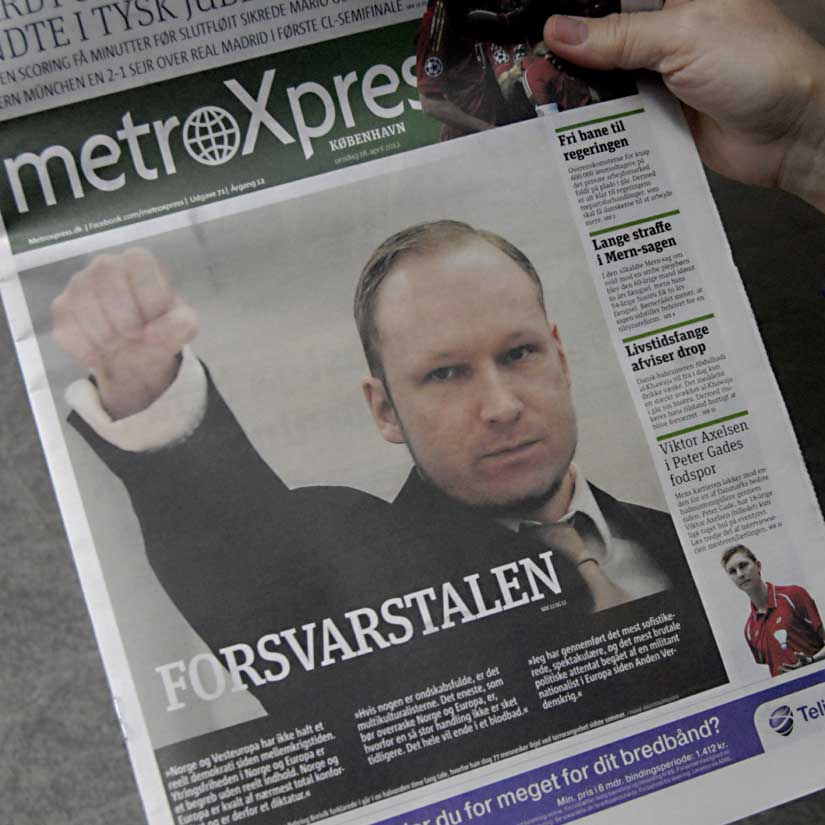
Breivik’s statement
Thank you.
I think we can all agree that on July 22 a barbaric action occurred. What happened on July 22 in the government quarter and on Utøya were barbaric acts.
And I remember that on July 21 I thought after several years of planning, “Tomorrow morning I will die” [Breivik took a deep breath and leaned forward before continuing].
I came to within 200 meters of the government quarter. Then I remember I thought, “In two minutes I will die.”
And what am I going to die for? That’s what I’m going to talk about now.
I’m not going to deliver a speech. I gave my explanation on April 17th, and it contains many of my arguments. That statement explains the most. [See Breivik’s opening statement on Day 2 of the trial.]
There are still some things I did not say enough about, and that’s what I’ll take up now.
The Sanity Issue
I will start with the assessment of my sanity. As a starting point, every person under the law is presumed sane.
And of those who have evaluated me, a total of 37 highly qualified individuals, out of 37 people, 35 have not found any symptoms at all. And of the 37, two have found a multitude of symptoms.
So it’s pretty obvious what one should emphasize. The 35 people or the two people. It’s clear the prosecutors do not want to repeat here in court what I said in the interrogations. I will not go into that now.
The prosecutor said I wanted to claim mental incapacity in the beginning. That is not true.
In December or late November, when the firsaA [psychiatric] report came [concluding that Breivik was a paranoid schizophrenic], everyone was shocked
I was thinking: What to do next? I thought I would wait for the debate to die down. And I thought hard about strategy before demanding two new experts.
Also, gradually I thought: Now that I have been betrayed by two psychiatrists who do not have access to the conversations, how will I ever trust a psychiatrist again? That’s why I was considering not allowing myself to be examined again. If I get two reports against me, it’s over.
Democracy No Longer Functioning
As I’ve explained, especially on April 17 [the opening statement], the European democratic political model is not working. The arguments I presented emphasize the need for a fundamental change of leadership in Norway and Europe.
This began with World War II. In the 1960s the Labor Party decided that a large group of Pakistanis who had been refused entry into Finland, and who came to Norway on a tourist visa, should be granted residence.
And that was how the multicultural experiment in Norway began. The Labor Party decided that Norway should follow Great Britain’s example, with Asian and African mass immigration.
I have already talked a lot about the ridicule of cultural conservatives. So I will not talk much about it, except to address some high points.
The main characteristic has been political discrimination. Cultural conservative NGOs [non-governmental organizations] and youth organizations receive no funding. They are opposed. Perhaps the only cultural conservative newspaper we had in Norway, Norway Today, lost press subsidies just a few years ago.
After July 22 subsidies to HRS [Human Rights Service], a cultural conservative organization, were halved. That’s an organization that has nothing to do with me. During the past 20 or 30 years there has been public funding of extreme left organizations in Norway such as Blitz [an “antifa” communist, anarchist, and socialist youth movement permitted by the state to employ violence against the Progress Party, the Fatherland Party, the Democrats in Norway, and others] Serve the People [Serve the People—Communist League; Tjen Folket – Kommunistisk Forbund, a Maoist group] and the Norwegian Center Against Racism [Antirasistisk Senter, an anti-white NGO].
Ethnic Deconstruction
Perhaps some will remember the leader of Future In Our Hands [Fremtiden i våre hender], Steinar Lem [a Norwegian environmentalist], who died of cancer a few years ago. One of the last things he said was something that had burned within him, but he had not dared to articulate before he knew he was going to die.
It was that we fought for Tibetan rights and the Tibetan indigenous people, but in Norway it is not permitted to say that Norwegians have as much right to a homeland as the Tibetans, and that our rights are in fact equally important.
He did not dare to speak the truth before he was told by his doctor that he was going to die. Only then did he dare to say what he thought.
In part of the compendium, I’ve written a lot about [ethnic] deconstruction and the absence of morality in Norway since 1968. They are huge problems. In Norway today, ideals are upheld that are extremely harmful and will be detrimental to our future.
When it comes to sexually transmitted diseases and the sexual revolution, it’s actually something that is underreported, and has created major problems in Europe. The ideal being upheld is to have sex with as many strangers as possible. Instead of focusing on the nuclear family, the focus is on dissolving it, and all the problems which that entails.
For example, the Sex and the City ideal, where Samantha and Carrie through 100–200 episodes of the series have sex with hundreds of men. These are the ideals that are upheld today. This is a disease. It’s like sugar to the audience. These sick ideals should be censored and shielded from our community.
So people neglect their duty to family and nation. They get education, travel, and are 35 before they start having children. Women should begin having children in their 20s. Our birth rate is below replacement level.
No Free Speech
One of the most influential people in Norway, Arne Strand [a print and broadcast journalist and former member of Prime Minister Gro Harlem Brundtland’s cabinet] in Dagsavisen [the daily newspaper Strand edits, until 1999 the official organ of the Labor Party, now independent] has issued many statements about press subsidies.
He proposes that everyone on the right, to the right of Carl I. Hagen [former Vice President of the Storting (Norwegian Parliament) and ex-chairman of the Progress Party], should be censored, and excluded from the democratic process. He says straight out that government press subsidies [to the Left, denied to the right] are necessary to preserve the current political hegemony.
We must protect hegemony, we must not allow people the right to express themselves. The system of press subsidies ensures that Norway will never be a democracy, because those on the far right are excluded.
I will mention some important political actions by the Labor Party, those in power in Norway, that legitimize and may trigger violent counter-reactions.
Psychiatry and the Legacy of World War II
Svein Holden [one of Breivik’s prosecutors] said that after WW II not many people in Norway were sent to psychiatric wards. He meant that only novelist Knut Hamsun and Justice Minister Sverre Riisnæs were sent to mental hospitals.
[Sverre Riisnæs served in Vidkun Quisling’s Nasjonal Samling (NS, National Unity) government during the German occupation; after the war he was imprisoned in a Norwegian psychiatric hospital from 1948–1960.]
But there were several. [“Breivik sits leaning forward in his chair as he speaks. Defense attorneys Geir Lippestad and Vibeke Hein Bæra lean back and look down at the table.]
It’s no secret that after the war many cultural conservatives and nationalists were neutralized with the help of psychiatry. Many members of the Nasjonal Samling were sent to the madhouse by Labor.
Halldis Neegaard Østbye, Quisling’s secretary and NS-ideologue, among other things wrote the book Jews’ War in 1943. She eventually died at Dikemark madhouse. Her and her husband’s ski factory was taken from them by the Labor Party at war’s end.
[Halldis Neegaard Østbye, active NS leader and prolific writer. In 1938 she wrote The Jewish Problem and Its Solution under the pseudonym “Irene Sword.” It was reissued in 1942 and 1943.]
And Knut Hamsun we know about.
These unconstitutional, unjust, illegal sentences should be abolished, and compensation provided to the relatives.
Non-NS’ers who were opposed to the Labor Party were also tried and declared mad.
An example is editor Toralv Fanebust [a harsh critic of Norway’s post-WW II trials and persecutions]. When the attempt [to declare him insane] failed, he was given a lengthy prison sentence for having written about important Labor Party members’ actions before and after the war.
His grandson has recently released the book Krigshistorien: oppgjør med mytene [War History: Reckoning With the Myths].
Violence Against the Right
What else has the political power instigated and applauded that is likely to precipitate violent resistance?
The Fatherland Party [FLP, Fedrelandspartiet, a nationalist party in Norway between 1990 and 2008] received about 0.5 percent of the vote in 1993, the first time they ran in Parliamentary elections.
[FLP leader] Bjarne Dahl in 1993 tried to legitimize political opposition to immigration. At a market square meeting in Oslo, he had his face smashed with an iron pipe, his jaw broken, and his teeth knocked out in attacks by some Blitz members [antifas belonging to the state-funded group mentioned previously].
Party leader and professor Harald Trefall [1925–2008, experimental physicist, anti-immigration activist, and Fatherland Party founder] was also hit in the face by something that was thrown. The party chairman was bleeding from a wound in the face.
Also, others were beaten and kicked.
When a horrified spectator tipped off Dagbladet [one of the country’s largest newspapers] about these violent attacks, he received the following response from Dagbladet: “Isn’t that good, then?”
This was their attitude. The same attitude shared by most of the press. The mass media made no mention of the violent and dangerous attacks against the Fatherland Party.
No Freedom of Association
On June 28, 2002, the parliamentary parties committed democratic suicide. They passed a new law saying that all parties that hadn’t received at least 5,000 votes in the last election were stricken [from the ballot].
They must collect 5,000 signatures under stringent restrictions. This means that there are very few small parties. It is almost impossible to start a new party in Norway today. In Sweden, the requirement is 1,500 signatures.

Vigrid logo
The PST [Police Security Service, Politiets sikkerhetstjeneste, internal secret police] boasts unrestrainedly about how they crushed Vigrid [link to its website]. The police called on all the young people in the organization and their parents. PST destroyed the organization through harassment of its young members.
[One day in 2004, agents from all 26 field offices paid personal visits to each of Vigrid’s members, many of whom were teenagers living with their parents. The investigators continued this tactic for several months, until about 60% of Vigrid quit the group. –Trans.]
What they have done is systematically harass political activists.
In addition, PST ran a comprehensive harassment campaign against the leader of Vigrid, Tore Tvedt. Among other things, extensive surveillance, house raids, arrests, and making sure he was repeatedly thrown out of rented houses.
At a school debate on August 28 in connection with the parliamentary elections of 2009, the party leader [Øyvind Heian] of the Norwegian Patriots [NP, NorgesPatriotene, a defunct anti-immigration party] received cuts in his forehead causing severe bleeding [during an attack by a far left anti-white mob including SOS Racism], forcing him to leave the meeting. The meeting continued as if nothing had happened. Neither the school administration nor the police did anything at all about the attack on the party leader.
Before local government elections last year the Christian Unity Party [KSP, Kristent Samlingsparti] was attacked by a person belonging to SOS Racism; they are communists.
Such things of course anger everyone with nationalist attitudes in this country.
That a counter-reaction has not occurred before July 22 amazes everyone who follows national trends. The anti-democratic forces that govern our country are obviously expecting something. This can be seen from the adoption of new surveillance measures. They have been doing exercises on scenarios like what happened [on July 22].
Yet those who govern the country say they have done nothing that could give rise to such a reaction. It is quite possible that many people connected with the power structure actually believe this.
Which means dark prospects for our country.
Communism and the Ruling Class
It is well known and documented that the Labor Party before World War II received funding from the Soviet Union. However, it is wrong to say that Labor is a full-fledged communist party. They do not support a planned economy. Hence the expressions “cultural Marxists” or “semi-communists.”
It is known that many Labor Party leaders had close relations to the Soviet Union right up to 1993. The Prime Minister’s father, [former Norwegian Foreign Minister] Thorvald Stoltenberg, had, for example, a code name in the KGB. Even Jens Stoltenberg [leader of the Labor Party and current Prime Minister of Norway] had a code name, “Steklov,” in the KGB archives.
[According to Wikipedia, until 1990 now-Prime Minister Jens Stoltenberg “had regular contacts with a Soviet diplomat who later was revealed to be a KGB agent. According to Stoltenberg he immediately broke off this relationship when he came to the knowledge that his contact was a KGB agent. Several sources have confirmed that Stoltenberg’s code name within the KGB was “Steklov,” a name Jens Stoltenberg used as his online alias when playing computer games such as Age of Empires.]
Of two books about this, one, The Eagle Has Landed [Ørnen har landet, 2003] by Reiulf Steen I do not think has been suppressed, but I believe there’s a new book by Christopher Andrew that has been halted.
The problem with Labor is not their communist past, but that they refuse to acknowledge it.
Deconstructing the Nordic Race and European Culture
Labor Party Secretary Raymond Johansen claims they are required by international agreements to admit immigrants—instead of confessing that they want to transform Norway ethnically and culturally.
Raymond Johansen is intelligent enough to know that Japan and South Korea have experienced the same pressure from the UN to accept immigrants, refugees, and asylum seekers. Japan and South Korea have learned to say no. They do not want the nation to be used as a dumping ground for the birth rate of the Second or Third World.
The political model in Japan and South Korea proves that countries that say no to mass immigration in the long run will be stronger than those open to mass immigration.
We will experience huge ethnic, cultural and religious conflicts. It is such conflicts that led to July 22.
This the Labor Party and Raymond Johansen know. If they had any integrity they would admit why they want mass immigration. In other words, they have exactly the same agenda as the social democrats in Sweden, Denmark, Germany, and Great Britain.
Labor wants to deconstruct Norwegian culture. They want to deconstruct the Nordic race and Norwegian and European culture.
Individuals who have manifested support for cultural conservative organizations have been systematically ridiculed, harassed and persecuted in Norway and Western Europe since World War II.
In Norway, several hundred people over the last ten years have lost their jobs and been branded as racists because they opposed immigration.
An example is Remi Huseby [the young spokesman for the Norwegian Defence League, a group affiliated with the English Defence League], who lost his job after being labeled an intolerant and vicious right-wing extremist on the ground that he was opposed to the Norwegian state ideology, multiculturalism.
As a result, his employer felt pressured to fire him. This is only one case that documents journalists and editors ridiculing and persecuting cultural conservatives from WW II to the present.
The worst thing is that this demonization is better than being ignored. Being ignored is the worst of all.
In hundreds of cases in Europe and Norway cultural conservatives, anticommunists, and nationalists have been driven to suicide by public labeling and demonization. It is the same as in the Soviet Union.
So, another point I thought of omitting: cultural self-loathing. Norwegian society is suffering from a cultural psychological disorder that manifests itself through self-contempt for Norwegian ideals. This collective cultural psychosis is caused by decades of cultural Marxism.
A good example is Norway’s contributions to the Eurovision Song Contest over the past four years.
We let a White Russian asylum seeker, probably with a Tartar background. It is indeed good that we very occasionally allow an asylum seeker to represent us. But what is going on?
A few years later we let Stella Mwangi [a black, Nairobi-born “Norwegian-Kenyan” singer] win with a bongo song. What is Norway doing, sending an asylum seeker as ambassador? Is it lack of Norwegians in Norway, or are they suffering from self-hatred?
Then we let an asylum seeker from Iran win. This is an insult to all Norwegians. The answer is simple. A great many Norwegians suffer from cultural delusions and have urgent need for “medication,” with immediate implementation of cultural protectionism and the Nordic ideal.
Regarding the definition of the term “indigenous people,” this means original or old residents. It does not mean ethnic Norwegians are not indigenous.
We know of course that the United Nations does not recognize ethnic Europeans as indigenous people. But we must observe the UN’s agenda, its creation when the Axis powers were defeated in WW II.
The UN supports the deconstruction of European states. So does the European Union [EU]. The UN does not support the idigenous European population because the UN is controlled by cultural Marxists—the same as the EU.
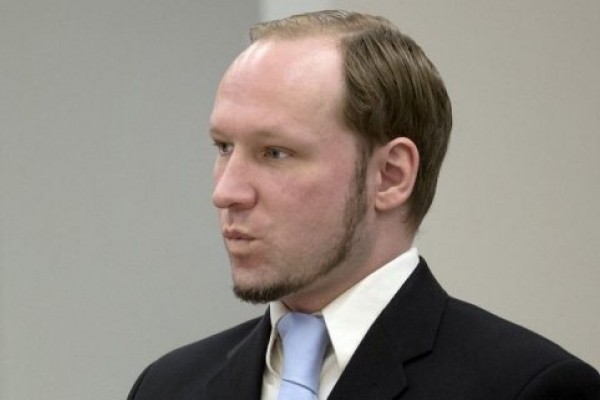 José Manuel Durão Barroso, who has been the EU’s supreme leader for many years, was a longtime member of the Portuguese Communist Party. This shows the kind of people that hold power in the EU and the UN.
José Manuel Durão Barroso, who has been the EU’s supreme leader for many years, was a longtime member of the Portuguese Communist Party. This shows the kind of people that hold power in the EU and the UN.
So, to come back to the definition of the word “indigenous.” There is no definition of “indigenous peoples” that nationalists and cultural Marxists can agree upon. Europe’s nationalists and cultural conservatives use a different definition than does the EU or the UN. The correct definition is “old or original people.”
Why should one support the struggle for indigenous people in Tibet, Bolivia, and other places but not in Europe? Why do indigenous activists in other parts of the world receive support and praise, while indigenous activists in Europe are branded as racists?
The battle is identical for all indigenous activists, namely, to fight against the ethnic and cultural extinction of their people from immigration. The fact that activists elsewhere are supported while we are combated as if we were a disease is an intolerable injustice.
When it comes to ongoing ethnic deconstruction I would recommend that everyone read the essay [he mentions its title, but the reporter omits it] by David Coppell and Johan__.
Muslim Demographics
Regarding Mullah Krekar [a Kurdish Islamic refugee in Norway], the reason I wanted to call him as a witness was to shed light on orthodox Islam’s view of Europe. He calls himself a Kurdish religious leader. He is one of the few Muslim leaders who are honest about Islam’s takeover of Europe.
Krekar said:
“In Denmark they printed drawings, but the result was that support of Islam increased. I, and all Muslims, are evidence. You have not managed to change us. It is we who are changing you. Look at the changes in the population of Europe, where Muslims reproduce like mosquitoes. Every Western woman in Europe has 1.4 children. Every Muslim woman in the same countries gives birth to 3.5 children.”
All the sources are in the compendium [Breivik says, looking at the judges].
I also remind you that Muammar Gadaffi, who was recently killed by NATO, said in March 2007:
“There are signs that Allah will grant us victory in Europe without use of the sword. We need no terrorists, we need no suicide bombers. The millions of Muslims in Europe will turn it into a Muslim continent within a few decades.”
I will mention a few points about demographics. Demographic examples documenting how Islamic demographic warfare works in practice.
Kosovo is a very good example that I have not talked about. In 1900 Kosovo was 60% Christian, 40% Muslim. In 1913 the figure was 50% [Muslim], 1948 72%; in 1971 it was 79 percent Muslim. In 2008, after NATO had bombed our Serbian, Christian brothers, Kosovo was 93% Muslim. In just 100 years Kosovo has gone from being a Christian country to being a Muslim country.
Lebanon is an occupied state. In 1911 it was 21 percent Muslim. Today there are more—approximately 80 percent. This is demographic warfare. Warfare that is waged against Europe and against Norway at this moment.
And not only against against Christians, but against Hindus as well. Pakistan [carved out of India as a Moslem state in 1947] was 25 percent Hindu in 1941; in 1948, 17 percent. Today, it is less than 1 percent. This is Pakistani “tolerance” for people who think differently. Bangladesh [which declared independence from Pakistan in 1971] in 1941 was 30 per cent Hindu; today it is less than 8 percent.
Then one can look at the exploding populations in Muslim countries.
In 1951 there were 33 million people in Pakistan. Today they are nearly 200 million. From 33 million to nearly 200 million in 60 years. Officially, they report a birth rate of 3.58, but it is of course a lie.
The media like to convey the idea that most Muslims support democracy, but it is not true. A survey conducted by the University of Maryland, in which 4,000 Muslims were queried, shows that 65 percent want to unite all Muslim countries into a caliphate, and 65 percent wish to implement strict interpretation of Sharia law.
“Child Killer”
One last point. Lawyers previously called me a child murderer. But we know that the average age on the island was over 18.
Many armies in the world have 18-year-old soldiers. Many of our own soldiers in Afghanistan are 18. Does this mean that we send children to war?
The Labor Party and the AUF [Labor’s youth auxiliary] are themselves guilty of mass murder of children in hospitals across the country. Thousands of children are killed every year by abortion. Muslims do not practice abortion because Sharia does not permit it. Labor is thus a culprit in mass murder, and then uses the low birth rate as an excuse for mass immigration.
Resistance Increasing
If you choose to recognize my claim of necessity, you will effectively send shock waves through all the illegitimate regimes in Europe.
The court should remember that the biased judges who worked for Hitler’s Germany were condemned by history after the war. Likewise, history will judge the judges in this case. [When Breivik said this, district court judges Wenche Elizabeth Arntzen and Arne Lyng looked directly at him.] History will tell whether they convicted a man who tried to stop the evils of our time. History shows that sometimes one must implement a barbarity to stop an even greater barbarism.
My brothers in the Norwegian and European resistance movements are sitting out there watching this case as they plan new attacks. They might be responsible for as many as 40,000 deaths. Yesterday, explosives were found at a Swedish nuclear plant, suggesting that my brothers in the Swedish resistance had something to do with it.
In the compendium I describe how to attack Swedish, German (…) [ellipses indicate missing material from the original transcript] nuclear power plants. It is intended to break the back of (…) PST knows that militant nationalists have access to weapons that can cause (…) It is my duty to warn about this because it can be prevented if the will is there.
Create an Ethnostate
In the compendium I described a solution that can prevent all future conflicts with ultra-nationalists.
The smartest thing that could be done is to give us autonomy, autonomy within a specific area of Norway for people who oppose mass immigration and multiculturalism. We are interested in having our own state within the state, reserved for the indigenous Norwegian people. In other words, national conservatives, orthodox Christians, and National Socialists.
Such a solution would be good for both parties. Marxists and liberals would not have to experience our anger and complaining about the current state. And we would not have to live in a multi-ethnic hell. I have written about this political model and will convey the proposal later.
A solution like this can be used in all European countries, and can thus prevent further escalation of the conflict between cultural conservatives and multiculturalists.
The starting point might be that they get control over an area equivalent to about 1–2 percent of the country, and the area increases proportionally with growth. If we do not succeed and flourish, the autonomous state will not be developed. This political model is similar to political solutions relating to indigenous peoples in other parts of the world. Many ultra-nationalists and others would feel positive about developing such a solution.
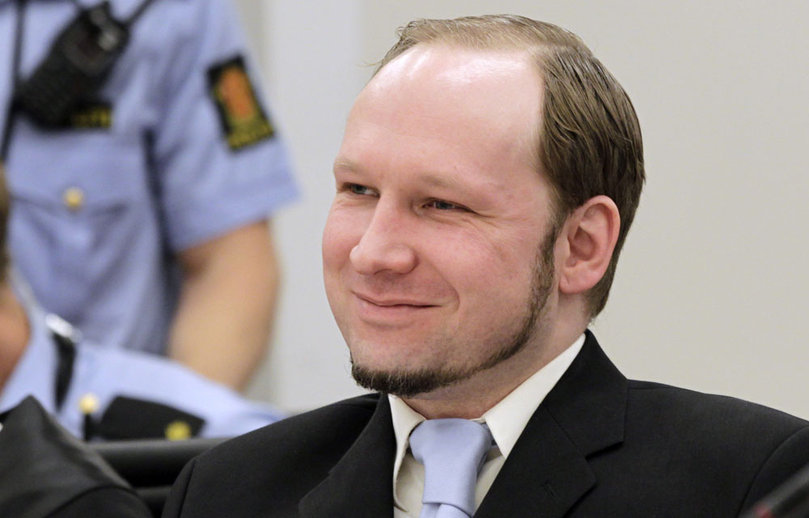 Fair Warning
Fair Warning
The alternative is that we focus on the takeover of the entire country of Norway—something Marxists and liberals would be mightily displeased with.
But the current regime is not interested in dialogue with us, so we have nothing to lose and the conflict will escalate over the next few years. It might not be tactful to say this in that the prosecutor is “gunning” on with “mental incapacity,” but I must convey my peace proposal, which could save many lives in the future [Breivik raises his voice when he talks about what will happen in the future].
This trial should be about finding the truth. The documentation of my claims—are they true? If they are true, how can what I did be illegal?
Norwegian academics and journalists work together and make use of (…) methods to deconstruct Norwegian identity, Christianity, and the Norwegian nation. How can it be illegal to engage in armed resistance against this?
The prosecution wondered who gave me a mandate to do what I did. Was it the KT [Knights Templar] network? I have answered this before, but will do so again. Universal human rights, international law, and the right to self-defense provided the mandate to carry out this self-defense.
Everything has been triggered by the actions of those who consciously and unconsciously are destroying our country. Responsible Norwegians and Europeans who feel even a trace of moral obligation are not going to sit by and watch as we are made into minorities in our own lands. We are going to fight.
The attacks on July 22 were preventive attacks in defense of my ethnic group, the Norwegian indigenous people. I therefore cannot acknowledge guilt. I acted from necessity (nødrett) on behalf of my people, my religion and my country.
I therefore demand that I be acquitted.
♣
See endnotes at Counter-Currents
